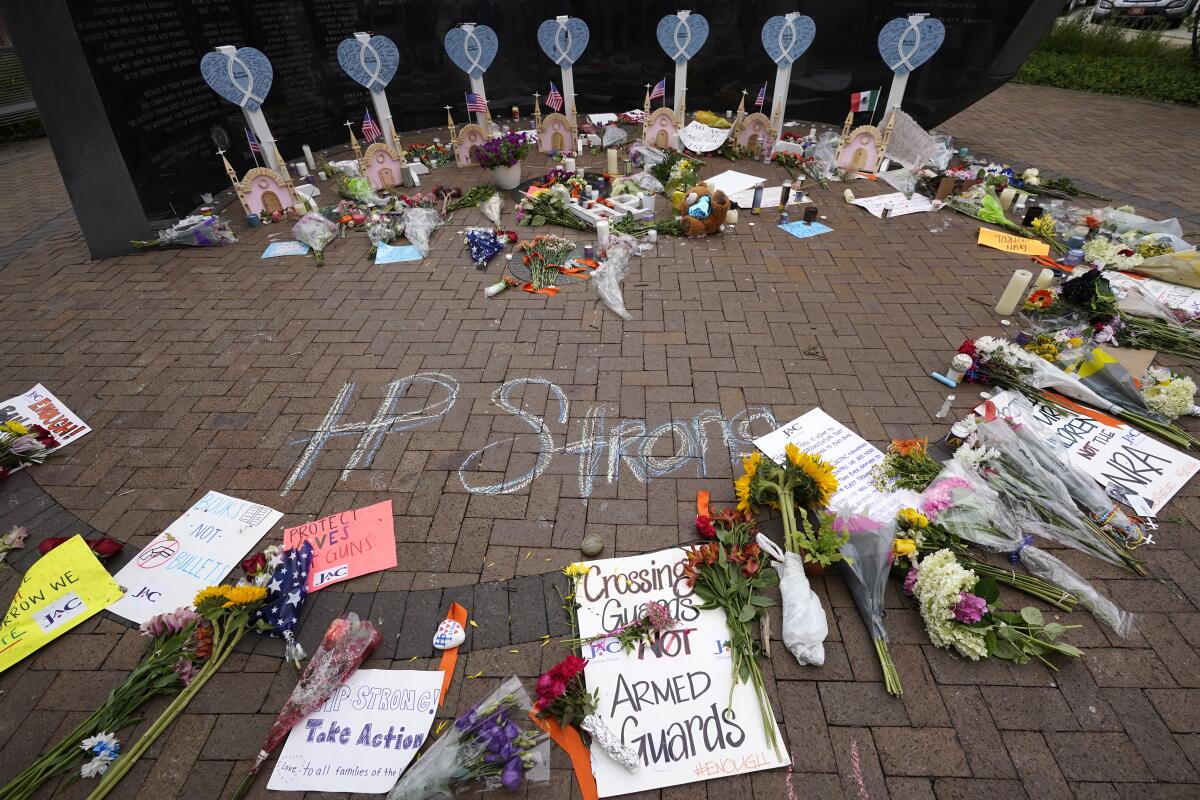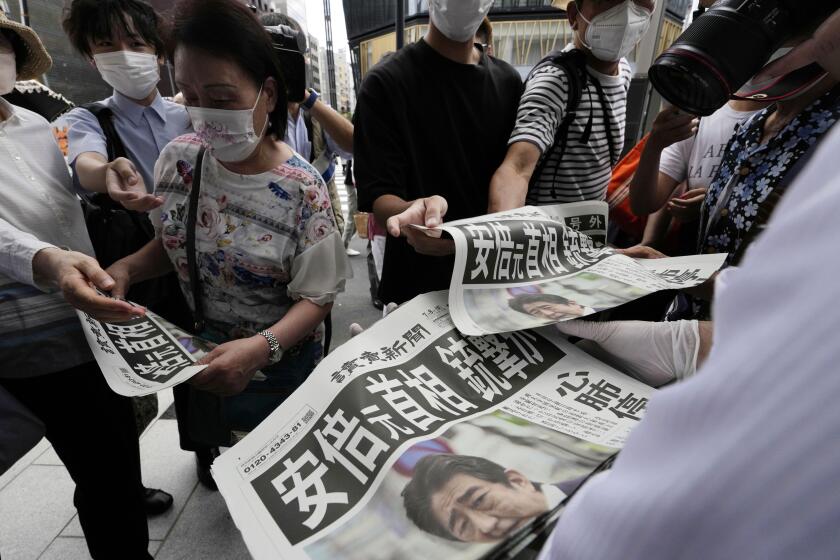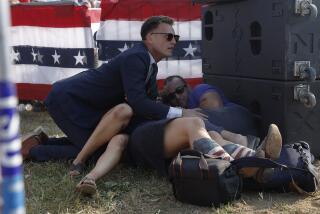How July 4 parade shooting suspect slipped through system

Illinois’ “red-flag” law could have stopped the suspect in the Independence Day parade shooting from buying a gun or at least delayed the purchase of the weapon he is accused of using to kill seven people and wound dozens.
Police in the Chicago suburb of Highland Park were called twice to the home of Robert Crimo III in 2019 — once after he tried to kill himself and again when he allegedly threatened to “kill everyone” in his family. On either occasion, they could have immediately exercised part of the law that allowed them to seek a restraining order to prevent Crimo from buying guns for 14 days to six months.
Obtaining such a delay could have bought critical time for police to seek more information to ask a judge for a longer order preventing a gun purchase.
But Highland Park police did not seek such an order, and they were not required to do so. And just four months after the reported threat that prompted officers to seize 16 knives, a sword and a dagger from Crimo’s home, Illinois State Police approved him for a firearms permit. The agency explained the decision in part by saying that it didn’t consider him a “clear and present danger” because he didn’t consider himself such a danger.
“When police went to the home and asked the individual if he felt like harming himself or others, he responded no,” the state police said in a statement this week, adding “importantly” that Crimo’s father assured officers that the collection of knives seized from the home was his and would be stored safely.
World leaders have reacted in shock over the shooting of former Japanese Prime Minister Shinzo Abe during a campaign speech.
That fateful decision in early 2020 to issue the then-19-year-old Crimo a firearms permit allowed him to legally purchase five guns, including the Smith & Wesson semiautomatic rifle authorities say he used from his rooftop perch to unleash more than 80 rounds on a Fourth of July parade below.
The episode highlights how, even in a state with some of the nation’s most restrictive gun laws, opportunities can be missed to keep weapons from dangerous and disturbed people. Although the authorities who crossed paths with Crimo contend their hands were tied by the law, several people familiar with Illinois’ statutes told the Associated Press there were more than enough ways to block him from getting guns.
“Laws don’t mean much unless they’re followed,” said Sean Holihan, the state legislative director for Giffords, a gun safety advocacy group. “This fell through the cracks. The law was written to make sure this wouldn’t happen and it still did.”
Added Nicholas Suplina, senior vice president for law and policy at Everytown for Gun Safety: “Red-flag laws are designed for precisely this kind of situation. ... It’s an important tool in the gun violence prevention toolbox. But you got to take the tool out and use it.”
A tool Highland Park police did make use of, they said, was the “clear and present danger” report filed with the state after their two visits to his home in 2019. Such reports are intended to alert state police to people who, if allowed to buy a gun, may pose an “imminent threat of substantial bodily harm to themselves or others.”
Highland Park police did not respond to requests for comment.
Crimo’s warning signs also included a voluminous and disturbing social media footprint that went back years and somehow escaped law enforcement scrutiny despite the fact that the aspiring rapper had thousands of followers on YouTube and songs on Spotify that collectively had millions of plays.
Stick-thin, dark-haired and heavily tattooed on his neck and face, Crimo went by the stage name Awake the Rapper and left signs in his videos of a fascination with violence, guns and suicide. One video titled “Toy Soldier” showed a cartoon figure brandishing a rifle on a city street, followed by drawings of a victim’s chest spurting blood and police cars closing in.
In online chat rooms that reveled in mass murder and gore, Crimo apparently also posted video of a beheading and grainy news footage of a politician’s public suicide.
“Like a sleepwalker … I know what I have to do,” Crimo narrated in another rap video posted late last year. “Everything has led up to this. Nothing can stop me, even myself.”
“We were not made aware of these videos,” Christopher Covelli, deputy chief of the Lake County Sheriff’s Office, told reporters.
For its part, Illinois State Police defended the issuance of a gun permit for Crimo, noting that Highland Park police had declined to arrest the teen after his alleged threat in September 2019 because they could not meet the legal hurdle of “probable cause.” To deny a gun permit, they said, requires an even higher legal standard — “preponderance of evidence” — that he is a clear and present danger.
State police also noted in a statement that even though an unidentified family member reported the alleged threat and spoke of a fear of returning home, family members denied Crimo was dangerous and didn’t want to press charges.
“When police went to the house, both the individual and his mother disputed the threat of violence. The individual told police he did not feel like hurting himself or others and was offered mental health resources,” the statement said.
Several months before, in April 2019, Crimo attempted to kill himself by machete, according to a police report obtained by AP that noted a “history of attempts.” Other police reports show officers had visited the Crimo home frequently over the years for domestic violence disputes and other incidents.
Several experts described Crimo as the epitome of a “clear and present danger,” defined under Illinois law as a person who “communicates a serious threat of physical violence” or “demonstrates threatening physical or verbal behavior.”
But others weren’t so sure, noting that police are limited in how much they can act when an accuser reporting violent threats doesn’t want to press charges and family members are uncooperative.
Even if an order had been issued, it’s not a given that a judge would have extended the order beyond six months.
Robert Berlin, state attorney for DuPage County, the most active issuer of red-flag orders in Illinois, said that the dozens of cases he’s overseen almost always include family members assisting investigators.
And although Berlin declined to comment on Highland Park police actions, he said that he couldn’t recall a red-flag order ever issued in his county against someone who was not already in possession of a gun and was aimed solely at blocking future purchases.
After receiving his permit in January 2020, Crimo passed four background checks when buying firearms that year and the next, the state police noted, adding that the only offense that surfaced in his criminal history was a 2016 ordinance violation for possession of tobacco.
Crimo, now 21, was arrested after disguising himself in women’s clothing. He now faces seven counts of first-degree murder. While investigators say he confessed to targeting paradegoers, they have not determined a motive.
Katherine Schweit, a retired FBI agent who spearheaded the agency’s active shooter program, said Crimo’s case underscores how difficult it can be to prevent such shootings, even with plenty of warning signs.
“It’s easy to see in the rearview mirror all of the pieces that tie together to an individual who clearly was on a trajectory toward violence,” Schweit said.
“But nobody was able to put it all together. ... Police and schools and friends and neighbors handled one tiny piece of this at a time.”
More to Read
Sign up for Essential California
The most important California stories and recommendations in your inbox every morning.
You may occasionally receive promotional content from the Los Angeles Times.











